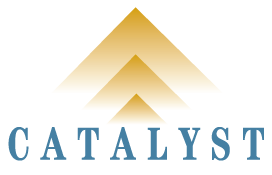The configuration and deployment of legal resources must be aligned with corporate, business unit and legal department goals. Legal service teams must reconcile geographic imperatives with expertise. Our offerings deal with
- legal specialities
- legal team and business unit alignment
- cross-border and multi-site legal departments
- functional – operational reporting of legal teams
- resources for the legal department

Organization and Resources of the Law Dept, Performance and Metrics, and Benchmarking, Surveys and Retreats
This e-book reprints a portion of our articles from our on-going series of articles in the on-line magazine Legal Business World. This second, short 47-page volume contains 2 articles on law department organization and resources, 4 articles on Performance and Metrics, and a final 2 articles on benchmarking, surveys and retreats.
The Director of Legal Operations
Four factors drive law departments to hire legal operations professionals and management: resource management and organization including staffing, budgets, facilities and technology; increasing demand for legal and advisory services; more innovative and effective management of external counsel; and the insatiable appetite to demonstrate measurable value of the law department to the company. The article profiles 5 Directors of Legal Operations suggesting that law departments with more than 10 lawyers should have one on board.
An Innovation Audit for the Law Department
The innovation audit can be applied to law departments to identify organizational roadblocks and challenges. A 45-question survey can reveal predictors and indicators for law department innovation. The questions are distributed across 5 categories: vision and culture, passion, relationships and networking, resource commitment. and measurement and reward systems. The article goes on to suggest potential initiatives for innovation.
Adding Another Lawyer to the Law Department
The business case to expand a legal department begins with a detailed forecast of the future demand for legal services. It is often a pre-requisite to change operating practices with internal clients and within the department to ensure a measurable improvement in the productivity. That improvement can allow counsel to eliminate backlogs and to take on more strategic, developmental and advisory work. Finally, the financial aspects of the business case to add a lawyer should demonstrate that net savings if insourcing would be at least 50% of law firm fees and would pay for a new position.
Thoughts on Pricing Legal Services
The Association of Corporate Counsel (ACC) released a comprehensive report benchmarking 15 legal operations. The law department maturity model uses three stages to survey the External Resources Management function. Only 11 % of the 316 participants reported they were in an advanced stage for this function. Few law departments made significant use of alternative fee arrangements or of metrics applied to pricing. The article discusses the need for pricing expertise, four questions to include in RFPs for legal services and how to approach alternative fee arrangements.
The Global Legal Department in the Future
The 5 stages of relationships between law departments and law firms, described in Heineman’s “Inside Counsel Revolution”, are summarized in the article. Very few companies have moved beyond panels of preferred law firms to a strategic integration with one or two primary firms. The article concludes that making longer term commitments to a handful of firms is a pre-requisite to non-hourly fees for portfolios of work and to significant innovation in legal service delivery that will change the behaviours of inside counsel and their primary firms.
Poor Leverage Means Poor Service
Planning and teamwork are essential to appropriate task delegation in legal work. Both law firms and law departments under-delegate and fail to rigorously oversee the use of experienced legal counsel.
Law departments face particular challenges moving away from solo practice models when have no entry-level lawyers available on the team. Team-based lawyering and tougher intake protocols are essential.
Arrested Development
Legal and corporate priorities are a frequent distraction for General Counsel trying to change the practice management and work allocation patterns of the legal department. Four management skills are essential to meaningful change in how legal resources are managed: a focus on results rather than process; a commitment to innovation with external counsel; a strategic business sense; and the efficient use of time for administrative matters.

